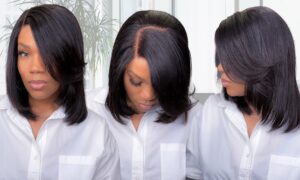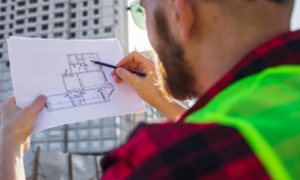Step into the realm where virtual reality merges with fashion, where the boundaries of imagination are shattered, and dressing up takes on a whole new meaning. Welcome to the future of fashion! In this exciting blog post, we embark on an adventure that delves deep into the fascinating world of Augmented Reality (AR) Metaverse and its profound impact on style. Prepare to be mesmerized as we uncover how technology is revolutionizing not only our closets but also our very perception of what it means to express ourselves through clothing. Get ready for a glimpse into a future where innovation meets artistry, and fashion becomes an immersive experience like never before.
Introduction: What is the AR Metaverse?
In a world where the physical and digital are blurring, it’s no surprise that fashion is also evolving. The future of fashion lies in the intersection of the AR Metaverse and style.
The AR Metaverse is a digital world that exists on top of the physical world. It’s a place where you can interact with others in a virtual space, using avatars to represent yourself. This new form of social interaction is growing in popularity, as it offers a unique way to express yourself and connect with others.
Style is an important part of the Metaverse. Just like in the physical world, your avatar’s style is a reflection of your personality. And with so many ways to customize your look in the Metaverse, there’s no limit to what you can express through fashion.
As the Metaverse grows and evolves, so will fashion. We’ll see new styles and trends emerge as people experiment with different ways to express themselves through their avatars. And just like in the physical world, fashion will continue to be a way for us to connect with others and make a statement about who we are and what we believe in.
The Role of Virtual Fashion in the AR Metaverse
As the world increasingly moves online and into virtual spaces, so too does fashion. In the past decade, we’ve seen the rise of digital fashion shows, e-commerce platforms, and even entire virtual garments that exist only in cyberspace. Now, with the advent of augmented reality (AR), we’re seeing a new wave of virtual fashion that is blurring the lines between what is real and what is not.
AR allows users to superimpose digital imagery onto their real-world surroundings, giving them the ability to try on clothes and accessories without ever having to leave their homes. This has major implications for the future of fashion, as it opens up a whole new world of possibilities for how we can interact with and consume style.
In the AR metaverse, there are no bounds to what can be created. Designers can experiment with new silhouettes, materials, and colors that would be impossible to produce in the physical world. This level of freedom has already led to some incredible innovations in AR fashion, such as holographic clothing that changes color and patterns based on your mood or environment.
What’s more, AR gives us the ability to try on clothes before we buy them, ensuring that we only purchase items that we know look good on us. This could spell an end to impulse buys and buyer’s remorse, as well as dramatically reduce waste in the fashion industry (which currently generates over $100 billion worth of unwanted clothing each year).
Exploring Virtual Influencers and Their Impact on the Future of Fashion
Virtual influencers are computer-generated characters that have taken over the internet, and now they’re coming for fashion. These digital avatars have amassed huge followings on social media, and many brands are taking notice.
While some may see virtual influencers as a passing fad, there’s no denying their impact on the fashion industry. For one, they’re much more affordable to work with than traditional human models. They also offer brands a new way to reach a younger, more digitally savvy audience.
What’s more, virtual influencers represent the future of fashion. As we move further into the age of augmented reality and the metaverse, it’s likely that we’ll see even more of these digital characters in our everyday lives. And as they become more realistic and lifelike, they’ll only become more powerful tools for marketers and brands.
The Role of Augmented Reality in Shaping the Future of Fashion
AR has the potential to redefine how fashion is designed, marketed, and sold. It can provide a new level of interactivity between consumers and brands and create a more immersive shopping experience. Here are some ways that AR could shape the future of fashion:
Customization and personalization: Consumers will be able to try on clothes virtually before they buy them and see how they look in different colors and styles. Brands will be able to offer more personalized experiences and products that are specifically tailored to each individual customer.
Increased engagement: AR can make fashion more interactive and engaging, providing a new way for consumers to connect with brands and products. It can also help brands tell their story in a more compelling way, bringing the customer into the brand’s world in a deeper way than ever before.
Augmented reality runway shows: Imagine being able to watch a live fashion show from anywhere in the world and see the clothes in detail as they come down the runway. This could give consumers a front-row seat to all the major fashion shows, without having to travel or pay for tickets.
Virtual fitting rooms: Imagine being able to try on clothes without even having to step into a store. Brands will be able to offer virtual fitting rooms where you can see how clothes look on you without even having to take them off the rack. This could save time and money for both consumers and retailers alike.
Personal shopper experiences: With AR, brands can create virtual shopping assistants that help customers find the perfect outfit or style based on their preferences and body type.
How AI is Revolutionizing Fashion Trends
In the past few years, we have seen a rapid rise in the use of artificial intelligence (AI) in the fashion industry. AI is being used to create virtual models, design garments, and even predict future trends. The use of AI in fashion is revolutionizing the way trends are created and followed.
One of the most important ways AI is changing fashion is by helping designers create virtual models of their garments. These virtual models can be used to try on different styles and find the perfect fit for each customer. This helps to eliminate the need for physical fittings, which can be time-consuming and expensive.
AI is also being used to design garments. AI uses past trends to aid designers in crafting popular styles. This data-driven method promises more inventive designs. Additionally, AI predicts trends by analyzing online data like social media, aiding brands to stay ahead by offering sought-after products.
The use of AI in fashion is causing a major shift in the way trends are created and followed. In the past, trends were largely driven by celebrity endorsements and word-of-mouth marketing. However, with AI playing a significant role, fashion is becoming more data-driven and customer-centric.
Conclusion: Where We Go From Here
When it comes to the future of fashion, there are many possible pathways. One possibility is the increasing use of augmented reality (AR) in the fashion industry. This technology has the potential
to revolutionize the way we think about and consume fashion.
For instance, AR enables trying clothes virtually before buying and assessing items in different settings (e.g., dress appearance at a party vs. work).
Tech, like AR, reshapes fashion. Blockchain’s rise in tracking origins and ensuring supply chain transparency is vital, especially for luxury items prone to counterfeiting.
Fashion’s future hinges on consumer preferences. Sustainability and ethical production might outweigh fast trends, possibly favoring customization that reflects individuality. The future of fashion holds intrigue.



































